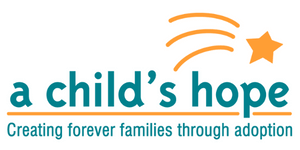In my last piece we determined that I don’t like unanswered questions. I’m still operating on the assumption that you don’t either. So let’s talk about the reasons to consider open or semi-open adoption.
There are so many good reasons to consider open or semi-open adoption. In a study called “Bridging the Divide: Openness in Adoption and Post-Adoption Psychsocial Adjustment Among Birth and Adoptive Parents” published in the 2008 Journal of Family Psychology (http://www.ncbi.nlm.nih.gov/pubmed/18729667), researchers found that “the degree of openness in adoption was significantly and positively associated with satisfaction with the adoption process shortly after the adoptive placement. Increased openness was also significantly related to better post-placement adjustment of birth mothers.” And in a study called “Open Adoption of Infants: Adoptive Parents’ Feelings Seven Years Later” published in Social Work, Vol. 48, number 3, July 2003 (http://www.ncbi.nlm.nih.gov/pubmed/12899288), researchers found that, “Every respondent (100 percent) agreed that ‘my child is better off because she or he has access to her or his birth parent.’”
You can see other studies listed on the right of the above pages under “Related citations,” but to summarize, birth mothers who participate in adoption planning for placement in open situations are more likely to seek support, utilize counseling resources, and to establish and follow through with prenatal care and often feel a stronger sense of commitment toward their adoption plan. The continued opportunity to hear that a child is doing well impacts a birth parent’s ability to feel reassured about and at peace with their adoption decision. And in the genuine form of open adoption, birth parents are permitted to have direct contact with the child and have the opportunity to speak for themselves in answering any questions the child has about their adoption, their ethnic background or their health background.
For the adoptive parents, having been chosen by the birthparents helps them feel entitled to parent, which helps insure attachment and bonding with the child. Having established a relationship with the birth parents can help reduce fears, guilt or insecurities felt by the adoptive parents related to the adoption.
The advantages for the adoptive child include an opportunity to reduce unknowns, allowing the adoptee to feel good not only about where he/she is, but also where he/she came from. Open adoption allows the child to witness and experience the love felt for them by their birth parent(s) and provides pathways for the child to obtain information about their birth family which goes beyond the medical and social history of the birth parents and birth family.
The list of positives for all parties goes on and on, but to my way of thinking, the most important reason is the availability of family medical history that isn’t available in closed adoptions. Yes, birth mothers fill out forms with family medical history, and the same information is obtained from birth fathers when possible. But is it complete? Has she remembered everything you need to know? Ten years later, has anything changed?
What if your child is in the emergency room with an unidentified illness, and the doctors think it might be a genetic problem? They want more information about the family history, but you don’t have it since your child’s adoption was closed. Or now your child is an adult, and the doctor is trying to assess the risk of breast cancer or heart attack, but that assessment is incomplete because a more current family history isn’t available.
(My mind can come up with all sorts of scary scenarios. I won’t do that to you here – as a parent you’ll be able to come up with enough of your own. Trust me!)
But if you chose open adoption, you could call or email the birth mother to get the information. If you chose semi-open, you would still have access to the information, but it would take time to get it since contact is through the Agency. Either way, you can get the information needed for your child’s health. With a closed adoption, you can’t, period. You’ve closed that door.
Thanks go out to Laura Kladis, MSW, our Adoption Counselor/Supervisor. She teaches a class for adoptive parents on the benefits of open adoption, and the information for this blog is from her class materials.
At A Child’s Hope, we offer semi-open and open adoptions. Since 2000 we have successfully placed over 250 children into loving homes. If you are pregnant, call one of our counselors at 1-877-890-HOPE (4673) while you are considering your options. There’s no obligation, and all calls are confidential.
So what about you – Do you like unanswered questions? Tell us what you think.
What is your adoption story? We’d love to hear it! Email your story to text.ach@foryourlife.com. Visit us at www.AChildsHope.com, or call our Birth Mother Hotline at 1-877-890-HOPE (4976) so one of our adoption counselors can answer your questions confidentially.
